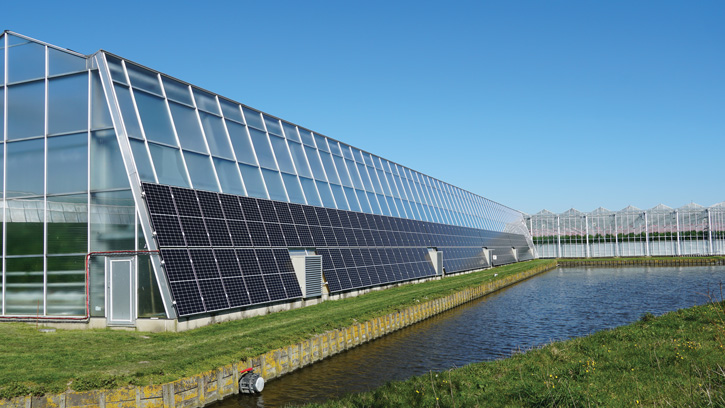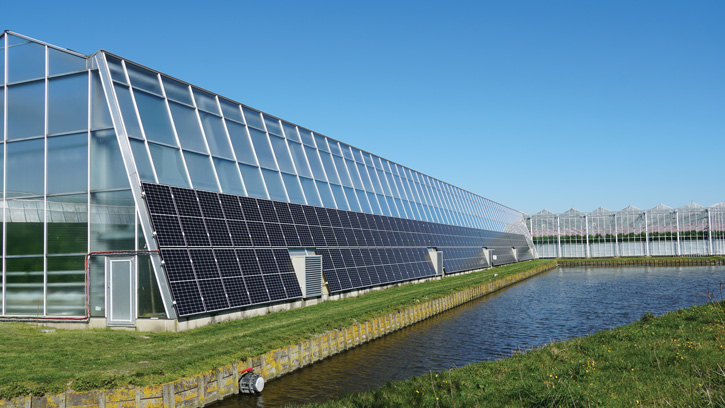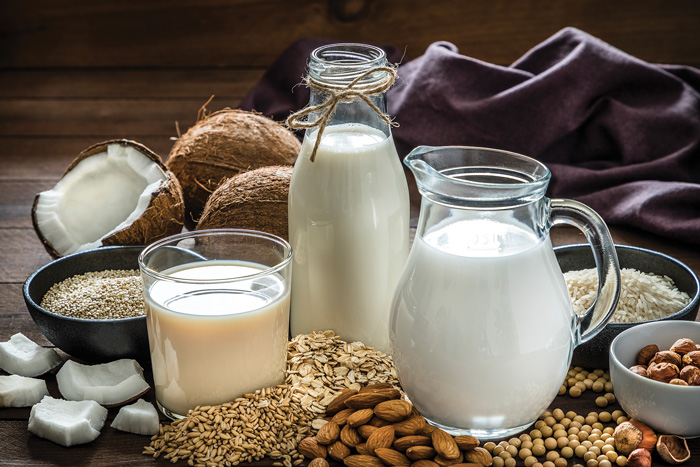Microbial protein from solar power; Underestimating plastic presence in food
NEWS
Microbial protein from solar power
Using solar panels to produce microbial protein could provide an energy-efficient way to feed the world, according to research published in Proceedings of the National Academy of Sciences.
An international team of scientists used computer simulations drawn from laboratory results to model large-scale microbial food production facilities, which use solar energy, air, water, and nutrients to grow microbes. After harvesting and processing the protein-rich biomass, the resulting powder can be used to feed humans or animals.
The scientists began their exploration by evaluating the energy requirements for each step, then comparing several types of microbes and growth strategies to identify the most efficient. For each kilo of protein produced, the solar-powered microbes were found to require only 10% of the land area compared with even the most efficient plant crop, soybeans. Overall, yields of solar-powered microbial foods could far outproduce staple crops, while minimizing water and fertilizer use, with production able to take place in many regions unsuitable for agriculture, including deserts.
“Integrating the cultivation of nutrient-rich microbes with renewable energy systems, such as solar panels, has the potential to produce more food with less resources,” said first author Dorian Leger in a press release. “This could free up vast amounts of agricultural land, and, in addition, prevent the further destruction of natural ecosystems, thereby making a valuable contribution to conservation and sustainability whilst promoting food availability globally.”
Underestimating plastic presence in food
A new study published in Science of the Total Environment found that seafood may contain more microplastics than previously thought and that the accumulation could carry potentially harmful bacteria, including E. coli.
In a laboratory experiment using oysters, researchers from the University of Portsmouth replicated conditions in the marine environment, in which microbes readily colonize microplastics that enter the ocean. When comparing uptake rates of clean microplastics with those coated with an E. coli biofilm, the scientists found that oysters exposed to the biofilm-coated beads contained 10 times more microplastics than those exposed to clean beads.
The researchers hypothesize that the coated beads may appear more like food to the oysters, which explains why they are preferred over the clean microplastics. Similar results could be found in other edible marine species that also filter seawater for food, the scientists believe, an implication of concern for the food chain.
“What we’ve discovered is that microplastic really is the Trojan Horse of the marine world,” said lead researcher Joanne Preston in a press release. “We discovered that clean plastics had little impact on the oysters’ respiration and feeding rates—but did have an impact when you fed them the microplastic hidden in the biofilm. The oysters took in more, and it affected their health. It is unsure exactly how much this could affect the food chain, but the likelihood is because the creatures are ingesting more plastic and, potentially, disease-causing organisms, this will ultimately have a negative effect on human health.”
“The findings in this research give us further insight into the potential harm microplastics are having on the food chain,” added co-author Steve Fletcher, in a press release. “It demonstrates how we could be vastly underestimating the effect that microplastics currently have. It is clear that further study is urgently needed.”
The state of food tech
Although second-quarter food tech funding slowed from its record high during the first quarter of 2021, deal count increased by over 10%, according to reporting from CB Insights, which notes that the majority of deals (62%) were early stage, pointing to an interest in startups innovating to solve global food system issues brought forward by the pandemic.
Investments largely focused on efforts to create a safer, more sustainable food system, as well as those that address food waste and labor shortages, including the following:
Ingredient innovation. Some of the largest deals in 2021 have involved ingredient companies that are transforming proteins, with alternative protein funding to B2B and B2C companies quadrupled from 2020’s funding as of the first half of the year.
Vertical farming. Because of their ability to address pandemic-related issues, such as food waste, supply chain vulnerabilities, and labor shortages, vertical farming startups have seen a growing number of investments and are projected to garner more than two-and-a-half times the funding they received in 2020.
No and low alcohol. Alcohol tech saw a 38% rise in deal count from first to second quarter, with multiple alcohol alternative startups receiving funding during the second quarter.
Restaurant tech. An area ripe for disruption, restaurant tech saw early-stage cooking robot startups garner funding as potential solutions to the food industry’s labor shortage.
Home chefs. The pandemic fueled a record second quarter for food delivery, and although funding has slowed, home chef delivery platforms are gaining traction, with the new delivery model addressing some gaps in demand left by the labor shortage.
National atlas for Listeria
Tracking down Listeria monocytogenes during food recalls and other investigations has just gotten easier, thanks to a new genomic and geological mapping tool created by Cornell University food scientists.
The national atlas, described in an article published in Nature Microbiology, contains information on the location of Listeria and related species within the contiguous United States and will help pinpoint sources of the bacteria found in ingredients, food processing facilities, and finished products.
To assemble the atlas, the researchers enlisted the help of hundreds of scientists across the country, who provided soil samples from the natural world, including off-trail areas of state and national parks. The samples were used to develop a nationwide atlas of 1,854 Listeria isolates, representing 594 strains and 12 families of the bacteria.
Using whole genome sequencing and comprehensive population genomics analyses, the scientists ascertained “the ecological and evolutionary drivers of bacterial genome flexibility—an important open question in the field of microbiology,” said lead author Jingqiu Liao in a press release, adding that the work can serve as a reference for future population genomics studies and will likely benefit the food industry by locating Listeria contaminations that may have a natural origin.
Market for non-soy dairy alternatives growing fast
New figures released by Euromonitor International show that milk alternatives that are not dairy based or made from soy are the fastest-growing category in the dairy products and alternatives industry, currently valued at $10 billion globally, an increase of 16% in 2020–2021.
According to the research, soy drinks have suffered due to their poor perception by consumers, while other non-dairy-based milk substitutes, made from almonds, oats, coconuts, and peas, have spurred innovation.
“The plant-based and lab-grown dairy space has hugely accelerated in the last year, thanks to heavy investments, including investment banks ‘pouring money’ into the industry,” said Maria Mascaraque, industry manager at Euromonitor, in a press release. “And this is likely to speed up more acutely with the entry of big consumer companies, such as Nestlé and Danone, who are investing in startups that are ahead of the game.”
In the next few years, Mascaraque expects companies to explore additional ingredients, including peas, chickpeas, and fava beans, due to their high protein level. She also predicts that product formulators will increasingly turn to blends to produce a tastier product, while new ingredients, such as lentils or algae, may spur innovation further down the line. Euromonitor also foresees lab-grown dairy becoming more affordable in the next five years and possibly becoming the most popular choice in 10 years.






